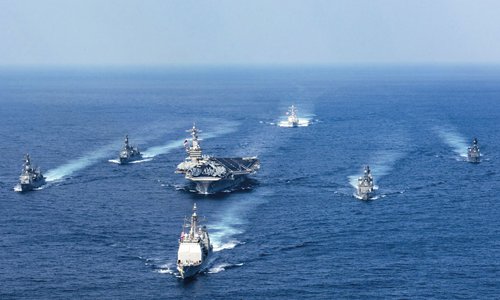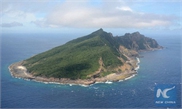
File photo. Photo: IC
The so-called missile threats from China and North Korea are only excuses Japan uses in its plan to break its peace constitution, Chinese experts said on Monday, after Japanese reports said the country is planning to develop a large Aegis-equipped warship as an alternative to the scrapped US-made Aegis Ashore missile defense system.
None of the current missile defense systems, including the Aegis, can intercept hypersonic missiles, like China's DF-17, analysts said.
Japan's Defense Ministry is mulling the use of a 9,000-ton ship, which, if realized, will exceed that of the Maya, the largest Aegis destroyer to date, commissioned in March with a displacement of 8,200 tons, Kyodo News Agency reported Sunday, citing an anonymous government source.
The plan is part of Japan's efforts to counter missile threats posed by North Korea and China's growing activities in the East China Sea, after the country in June rolled back plans to deploy the Aegis Ashore anti-missile land complexes, citing the threat of falling rocket boosters to residents, and cost to modify the technology, the report said.
Zhang Junshe, a senior research fellow at the PLA Naval Military Studies Research Institute, slammed the statement as Japan's excuse to develop its military power, while being constrained by its peace constitution.
Japan has the technology and money to build large ships. All it needs is an excuse to break through the constitutional limits, which is why they keep hyping threats of neighboring countries like China and North Korea, Zhang explained.
"Japan is also working as a chess piece for the US to assist the latter to develop large warships as part of its strategic defense system," Zhang told the Global Times on Monday.
Being placed on ships will increase the mobility of the interceptors, Zhang said.
Chinese military analysts also pointed out that the planned Japanese warship will not be able to intercept advanced Chinese missiles such as the DF-17.
The DF-17 is a short- to medium-range hypersonic missile that was showcased at the National Day military parade on October 1, 2019 in Beijing for the first time. Thanks to its ability to change trajectory in mid-flight at a very high speed, enemies have little chance of intercepting it, experts said.
Regions including the South China Sea, the Taiwan Straits and Northeast Asia are all within the DF-17's range, as South Korea and Japan deploy US-made air defense systems, which are security threats to China, experts said.
The decision on the Japanese ship plan will be made around the end of the year after the ministry receives an interim report in mid-November from two private firms familiar with the issue, Kyodo News said.


